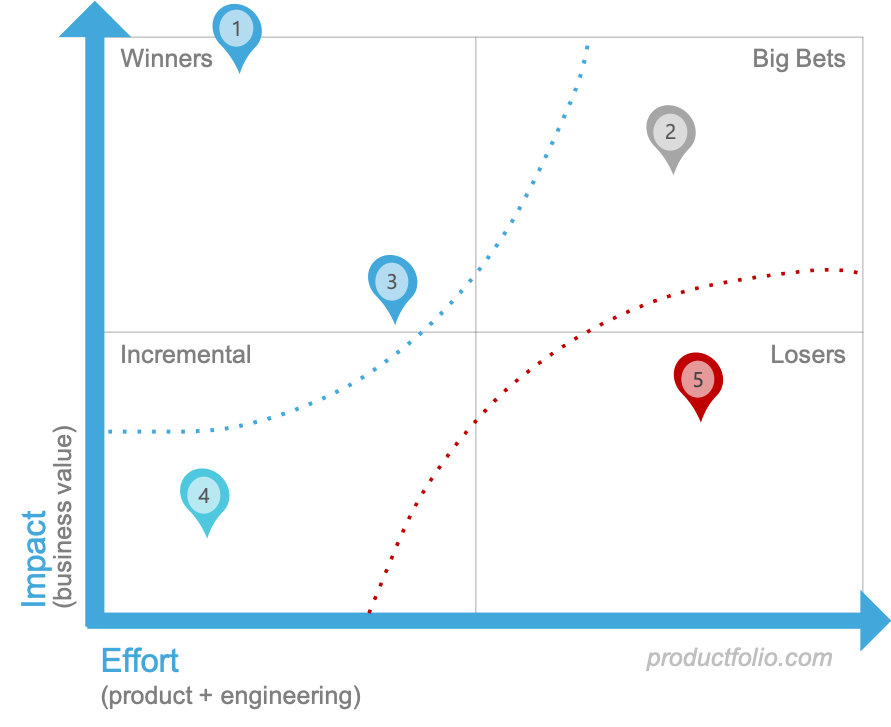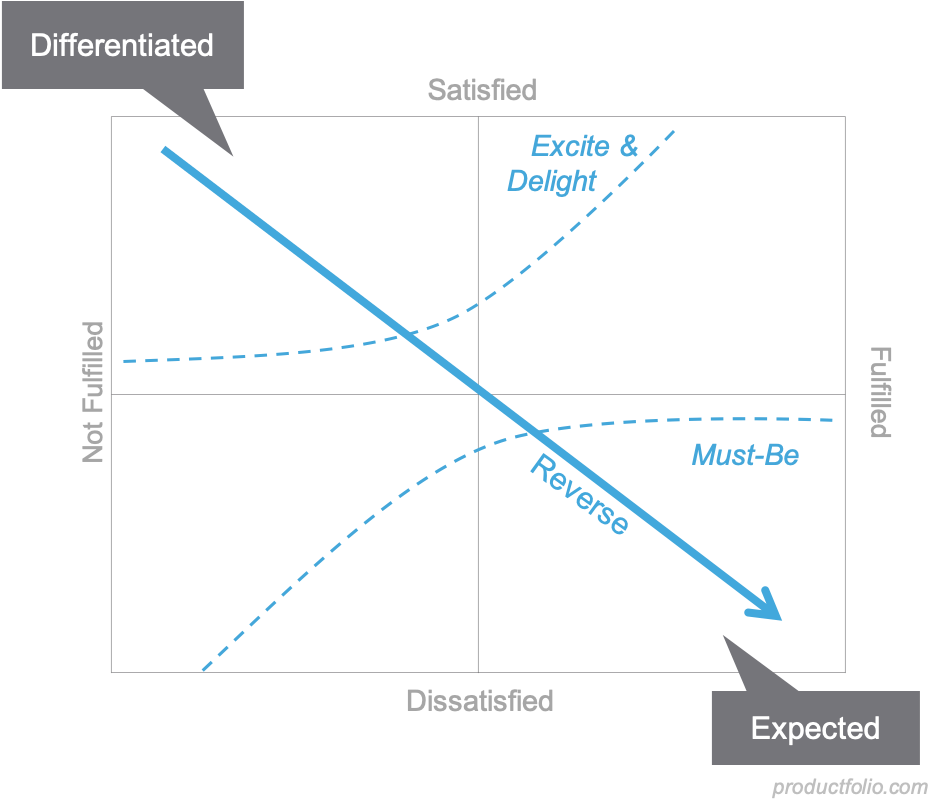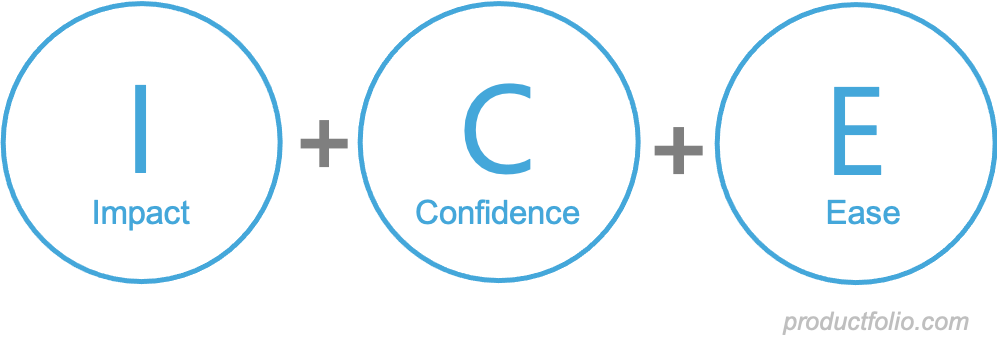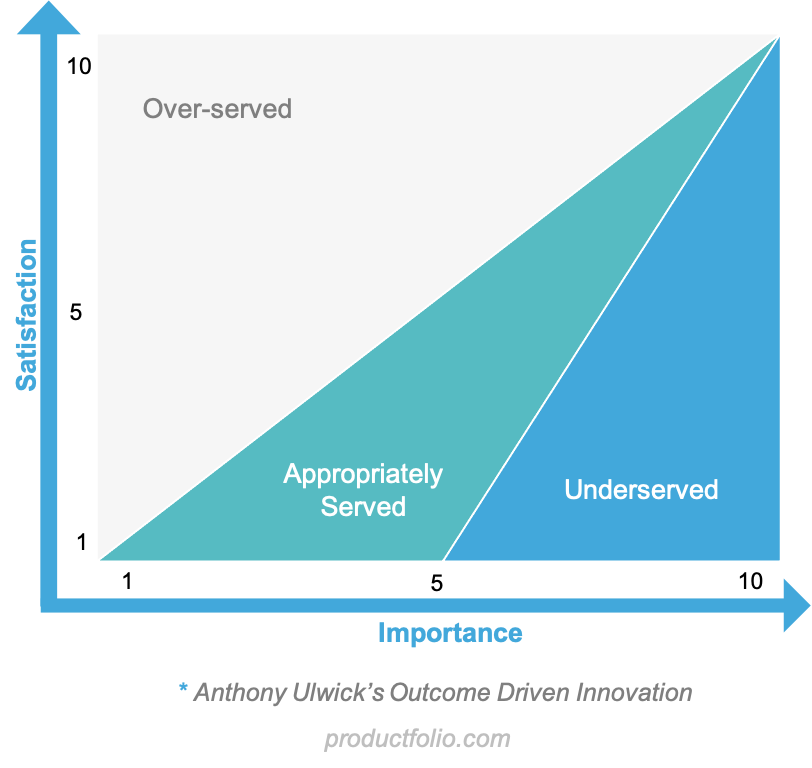Product Prioritization Techniques
Prioritization refers to a thoughtful process of carefully assessing ideas and work to deliver the greatest value and ensure efficient resource use. Prioritizing is something that every product manager must be good at.
However, the process of determining what’s more important can be polarizing. Passions can flare when people feel that their ideas are being thrown out. It, therefore, becomes important to do objective-based prioritization to eliminate or reduce friction.
There are many ways to approach prioritization. Each of these has particular situations they’re most suitable for.
Impact vs. Effort
This technique goes under different names, including Value vs. Cost, Value vs. Complexity, or “Bang for the buck.” It is a simple one that entails ranking high opportunities that have a greater impact while requiring less effort.

You work with your team to decide on scoring scales for impact and effort – usually, a 5-point scale. Reach impact and visual scores for each opportunity. You can then visualize and compare by plotting on a graph (Scatter plot) or by arranging in a matrix.
The Impact/Effort approach offers an easy means of identifying “low-hanging fruits.” Many product managers use it in their everyday work, intuitively.
MoSCoW Method
Here’s a prioritization technique that places ideas into one of four categories; it’s more about prioritizing features.

The name, MoSCoW, comes from those classes, which are (Os added for easy memorization):
- Must Do – Critical, non-negotiable features a product needs to have
- Should Do – Important features that would help to include but not enough to harm a product if they aren’t
- Could Do – requirements that are nice to have or desirable but optional
- Won’t Do – least-important features that won’t be built now but maybe in the future
MoSCoW Prioritization is popular among product managers working in Agile. It offers a simple means of prioritizing and communicating what you’re working on. The method works better for internal projects (involving fewer stakeholders).
Kano Model
Based on the ideas of Japanese researcher Noriaki Kano, this technique aims to strike a balance between customer delight and functionality. The idea is that the amount of satisfaction users get from product features depends on how well functionality is implemented.

The Kano model is portrayed on a graph, with satisfaction on one axis and functionality on the other. This usually gives 3-4 categories of features (depending on the author), including:
- Must-be – Also known as basic features, these are requirements that must be met to solve the problem of the customer. They are what mainly make a product useful.
- Performance – These are features that give your customers greater satisfaction as you provide them more or increase investment in them.
- Delighters – Here are features that customers didn’t expect but are greatly pleased to have. They are also known as “Attractive” or “Exciters.”
Essentially, the Kano model aims at keeping the customer happy. It helps when you are making decisions geared toward increasing satisfaction.
ICE Scoring Method
ICE is an acronym for Impact, Confidence, and Ease – factors to consider for prioritization. The ICE scoring method entails prioritizing by simply multiplying the numerical values of these factors.

Impact is about how much an idea would help to reach the objective(s). Confidence refers to your level of certainty about achieving the targeted impact. Ease relates to the degree of effort necessary to complete the work.
You decide a scale (say, 1 to 10) for these factors and score a project on each one. Then you multiply the three values together to get the ICE score for idea comparison.
This simple method is perfect for identifying “low-hanging fruit” projects that can quickly be completed. It works best for comparing a few project or product options.
RICE Scoring Method
You can think of this as an improvement on the ICE Method. It brings a fourth component, “Reach,” into the mix and alters “Ease” to “Effort.” Reach relates to the number of people that a product or feature will impact while Effort is the amount of work required.

The formula for calculating RICE scores is: Reach * Impact * Confidence / Effort
Confidence in this case may be a percentage. Also, you can use a scoring scale that includes non-whole numbers for Impact, such as the one below suggested by Intercom:
- 3 – Massive Impact
- 2 – High Impact
- 1 – Medium Impact
- 0.5 Low Impact
- 0.25 Minimal Impact
RICE is probably a better alternative when looking for something more advanced and qualitative than the ICE method.
Opportunity Scoring
Derived from the Outcome-Driven Innovation framework by Anthony Ulrich, Opportunity Scoring is about assessing ideas and opportunities based on expected outcomes and customer satisfaction. A major premise is that users aren’t great sources of solutions, but their feedback is vital all the same.

Therefore, you should put together a list of features or desired product outcomes. You then ask your customers to rank them based on perceived importance and their level of satisfaction with them currently on a scale. With this, you can rank opportunities, giving more attention to the very important ones with low satisfaction scores.
Each approach to prioritization has its strong points and weakness. They must be matched to the right conditions.
Critically assess the available techniques before picking any to use. Do not base your decision simply on the ease or subjective conclusions. Pay more attention to your objectives when making a choice.